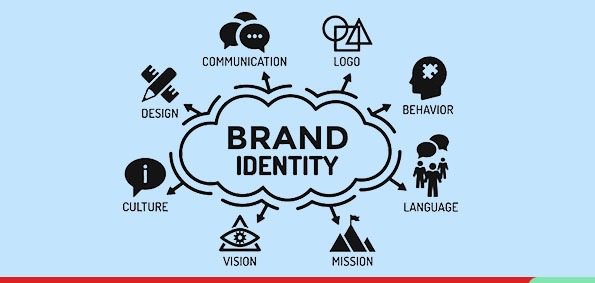Published
3 years agoon

The days of just designing a memorable logo to keep people coming back are long gone. There are several layers to a brand’s identity. Logos, typography, packaging, and retailing are just a few of the visible layers. Websites, messaging, and a brand’s dedication to a cause are all facets that people utilise to learn about the brand.
If you don’t invest the time and resources necessary to develop a unique identity, your brand will most certainly flounder. Brand credibility speaks to all the qualities you need to be successful. That’s why developing a brand credibility strategy first will help your brand identity make sense. Here are a few reasons why.
Building customer trust and loyalty begins with establishing your brand as an industry authority. It takes a long time to establish yourself as an industry expert. To get there, you’ll need a plan.
The process of developing that plan will necessitate some self-reflection. Where can you establish yourself as an expert, and which sectors are likely to be flooded with them? Where can you locate fresh thought leadership opportunities? How are you going to get the word out?
The majority of brands are restrained by their existing identities. To fill those leadership voids, companies may need to modify their branding or perhaps undertake a complete revamp.
That’s why you should identify industry leadership gaps first. Develop strategies to fill them. Then develop a brand identity with visuals and messaging that align with that expertise. With credibility as the foundation, your brand will make more sense to your customers.
According to recent studies, brand identity is becoming increasingly important to a company’s success. This necessitates a solid credibility strategy that spells out brand messaging as well as the channels through which it is delivered.
It’s nearly impossible to put a genie back in the bottle once a message has gone viral on social media. Even if the message is perfect, how it is delivered on each platform is crucial. Customers are tired of attempting to follow a tweet that was taken straight from a Facebook post.
Taking stock of the channels you should be using and plotting messaging practices for each of them can help sharpen your brand identity as you’re developing it. How does your logo, packaging or slogan translate across channels? Will a change in color help? Will a tagline tweak relate to stronger hashtags?
Your brand’s products and messaging must be consistent with one another, or your consumers will be confused. Everything, from how you monitor and respond to social media talk to how you package your products or commit to a cause, requires consistency.
Consistency should not be confused with similarity. For example, content supporting your brand’s expertise shouldn’t always include the same thought leader stating the same thing. The content’s goals, on the other hand, should be consistent: to increase recognition, encourage trust, and embrace transparency.
Without consistency, you’ll appear to be talking out of both sides of your mouth, and your brand will become suspect to customers. Once that happens, every time they see your logo or your product or messaging on social media, they keep moving. Restoring trust is a tricky task once it’s gone.
A brand credibility strategy will help keep consistency on track, which in turn will keep your brand identity authentic to the people who count. Be intentional with plans for consistent messaging, processes, policies and procedures. Let those drive your brand identity.
Not doing the work will undoubtedly make your identity incongruent with your credibility, occasionally at best and repeatedly at worst. Brand identity does nothing to prepare your brand if it takes a hit. It’s the brand credibility strategy that will guide you through those rough spots.
It may appear tedious to build credibility through consistent thought leadership. Furthermore, it doesn’t have the same flash and shine as creating a new logo or coming up with attractive slogan ideas. Consider it a building’s solid, but unappealing grey concrete foundation. It’s not spectacular, but it’s essential—all that glistening steel and gleaming glass isn’t going to hold up on its own.
So take the time to pour your brand’s credibility foundation right in the first place. You’ll build that brand identity from a position of strength.


Rs 10.7 Lakh Crore Lost in a Day: Will You Still Buy Gold After Nirmala Sitharaman’s Duty Cut?


Here’s why Elon Musk might need India more than he cares to admit


Why is Trump dodging a face-off with VP Kamala Harris?


CXO Chatter, with Kavita Singh, CHRO of Runaya


On’s LightSpray tech can make spray-on sneakers in just 5 minutes


Budget 2024: Focus Shifted from Suit-boot ki Sarkar to ‘Annadata’

